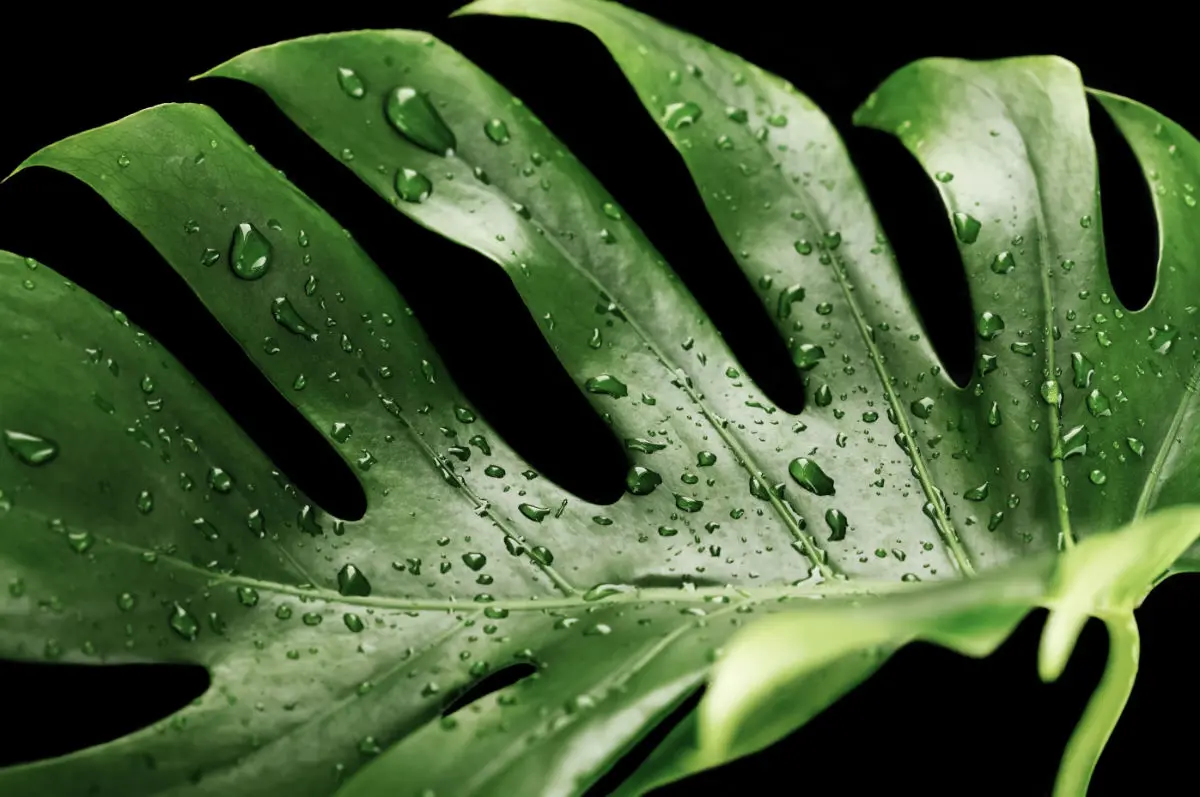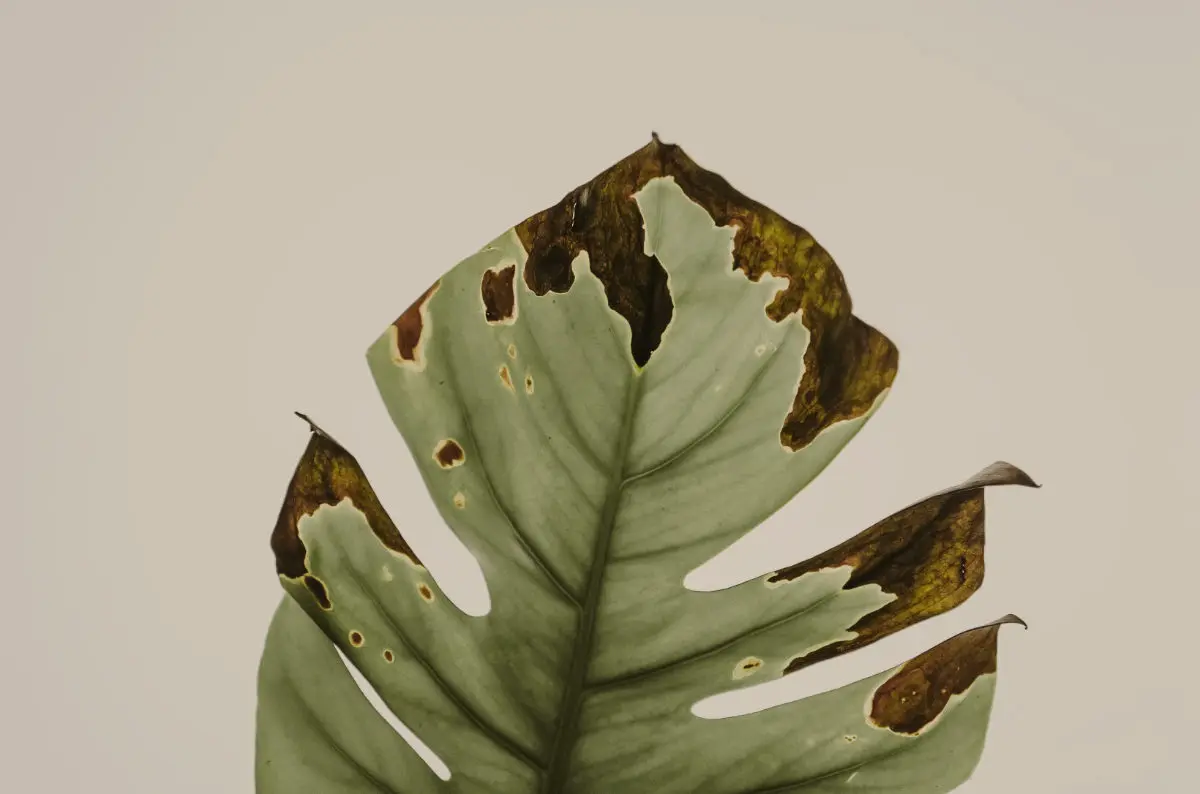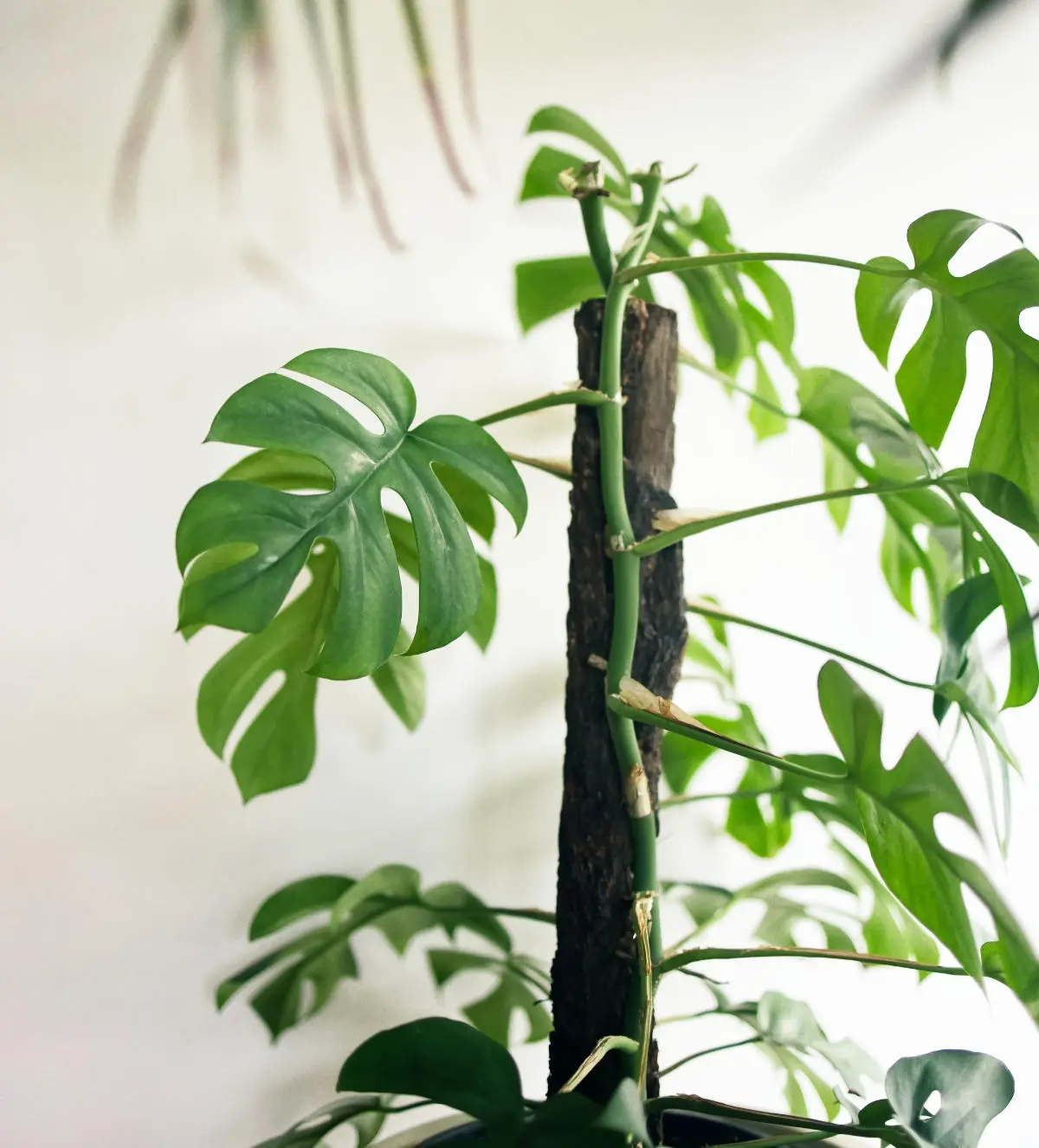Unveiling the Mystery: Why Does Your Monstera Plant Drip Water?
If you notice water dripping from your Monstera plant, it could be a sign of overwatering or high humidity. Learn the potential causes and how to address this issue to ensure the health of your monstera plant.
By Tobias Holm —
As you gaze at the lush green leaves of your Monstera plant, you might notice something puzzling – water droplets collecting on its leaves. But why does your Monstera plant drip water? Unveiling this mystery will shed light on the fascinating world of plant physiology.
One possible explanation is guttation, a natural process that occurs when excess water is expelled from the plant through specialized pores called hydathodes. These hydathodes are like tiny valves, releasing the excess water absorbed by the roots during the night when transpiration (water loss through the leaves) is low. It's nature's way of keeping the plant hydrated and maintaining a healthy balance.
So, if you find your Monstera leaves adorned with water droplets in the morning, it's a sign that your plant is efficiently absorbing and distributing water. It's also worth noting that guttation is more common in plants grown in high-humidity environments or when watering is excessive.
Understanding the reasons behind your Monstera plant's water droplets not only deepens your appreciation for nature's marvels but also allows you to provide the best care for your beloved plant. Let's delve into the fascinating world of Monstera plants and their unraveled mysteries.
Understanding Monstera plant physiology
Monstera plants, scientifically known as Monstera deliciosa, are native to the tropical rainforests of Central and South America. They are known for their large, perforated leaves that add an exotic touch to any indoor space. To understand why your Monstera plant drips water, it's important to delve into its physiology.
Like all plants, Monstera plants have a complex system of roots, stems, and leaves that work together to absorb water, nutrients, and sunlight. The leaves play a crucial role in this process through a phenomenon called transpiration, where water is taken up by the roots and transported to the leaves. This water is then released into the atmosphere through small openings on the leaves called stomata.
What is guttation?
One possible explanation for the water droplets on your Monstera plant is guttation, a natural process that occurs when excess water is expelled from the plant through specialized pores called hydathodes. These hydathodes are like tiny valves, releasing the excess water absorbed by the roots during the night when transpiration is low. It's nature's way of keeping the plant hydrated and maintaining a healthy balance.
Guttation is often mistaken for dew or condensation, but it is actually a different process. While condensation occurs when water vapor in the air comes into contact with a cooler surface, guttation is the result of internal plant processes. It is most commonly observed in the early morning when the air is cool, and humidity is high.
Causes of guttation in Monstera plants
Several factors can contribute to guttation in Monstera plants. One of the main causes is excessive watering. When the soil is consistently wet or overwatered, the roots absorb more water than the plant can transpire. This excess water then accumulates in the plant and is expelled through the hydathodes, resulting in water droplets on the leaves.
Another factor that can trigger guttation is high humidity. Monstera plants thrive in humid environments, and when the air is saturated with moisture, the plant may release excess water through guttation. This is especially common in rooms with poor air circulation or in areas with high humidity levels, such as bathrooms or kitchens.
Environmental factors affecting guttation
Apart from excessive watering and high humidity, there are other environmental factors that can influence guttation in Monstera plants. Temperature plays a crucial role, as guttation is more likely to occur when there is a significant difference between the temperature of the plant and the surrounding air. Cooler temperatures at night can contribute to guttation in the morning.
Light intensity and duration also affect guttation. Monstera plants require bright, indirect light to thrive, and when they are exposed to intense sunlight for extended periods, they may experience increased water loss through transpiration. This can lead to higher water absorption by the roots and subsequent guttation.
Signs of healthy guttation in Monstera plants
While guttation may seem like an unusual phenomenon, it is actually a sign of a healthy and well-functioning Monstera plant. Healthy guttation is characterized by small, clear water droplets that form along the leaf margins or tips. These droplets should not be sticky or have an unpleasant odor. If you observe such characteristics, it means that your Monstera plant is efficiently absorbing and distributing water.
Guttation is most commonly observed in young, actively growing Monstera plants. As the plant matures, the frequency and intensity of guttation may decrease. However, if you notice a sudden absence of guttation in your plant, it could indicate an underlying issue, such as water stress or root problems.
Potential issues with excessive guttation
While guttation is a natural process, excessive guttation can be a cause for concern. If your Monstera plant is consistently dripping large amounts of water, it could indicate overwatering or poor drainage. Excess water in the soil can lead to root rot and other fungal diseases, compromising the health of your plant.
In some cases, excessive guttation may also be a sign of nutrient imbalance or inadequate light. If your Monstera plant is not receiving enough light or essential nutrients, it may struggle to regulate water absorption and transpiration, leading to increased guttation.
How to prevent and manage guttation in Monstera plants
To prevent excessive guttation and ensure the optimal health of your Monstera plant, it's important to provide the right care and environment. Here are some tips for managing guttation:
- Watering: Allow the top inch of soil to dry out before watering your Monstera plant. Avoid overwatering and ensure proper drainage to prevent water accumulation in the soil.
- Humidity control: Maintain a moderate humidity level around your Monstera plant by using a humidifier or placing a tray with water near the plant. This will help prevent excessive water loss through guttation.
- Lighting: Place your Monstera plant in a location with bright, indirect light. Avoid exposing it to intense sunlight for prolonged periods, as this can increase transpiration and guttation.
- Nutrient balance: Provide your Monstera plant with a balanced fertilizer during the growing season to ensure it has access to essential nutrients for healthy growth and water regulation.
By following these guidelines, you can create an optimal environment for your Monstera plant, encouraging healthy growth and minimizing excessive guttation.
Common misconceptions about Monstera plant dripping water
There are several misconceptions surrounding Monstera plant dripping water that are worth addressing. One common misconception is that guttation is a sign of plant disease or pest infestation. While it's important to monitor your plant for any signs of distress, guttation itself is a natural and healthy process.
Another misconception is that the water droplets on Monstera leaves are harmful or toxic. In reality, the water droplets are just water and pose no harm to humans or pets. However, it's always a good practice to wash your hands after handling any houseplants to remove any potential allergens or irritants.
Conclusion: Caring for your Monstera plant
Understanding the reasons behind your Monstera plant's water droplets not only deepens your appreciation for nature's marvels but also allows you to provide the best care for your beloved plant. Guttation is a fascinating process that showcases the intricate mechanisms plants use to regulate water balance.
By ensuring proper watering, humidity control, lighting, and nutrient balance, you can create an optimal environment for your Monstera plant, minimizing excessive guttation and promoting overall plant health. Embrace the mysteries of nature and enjoy the beauty of your Monstera plant, knowing that those water droplets are a testament to its vitality and well-being.



